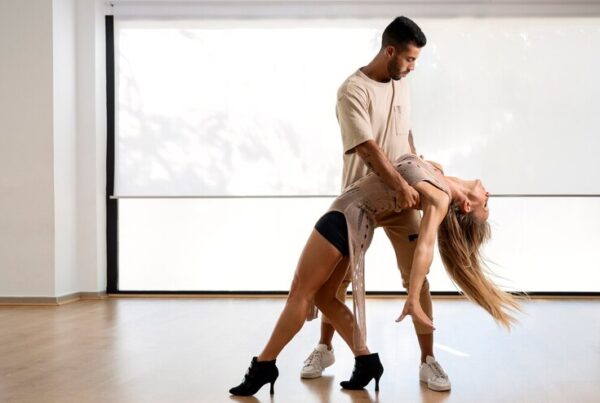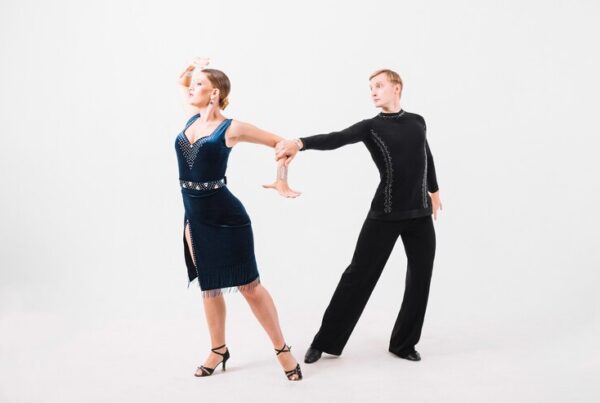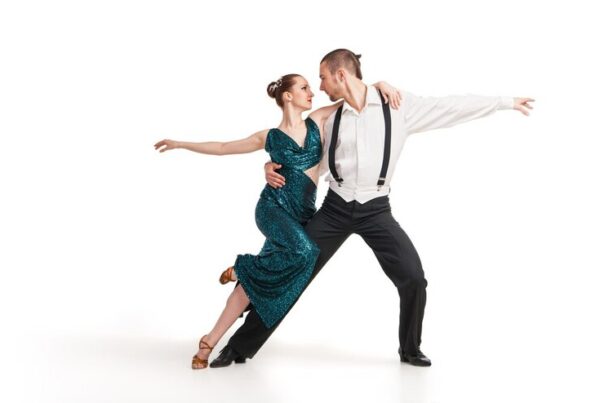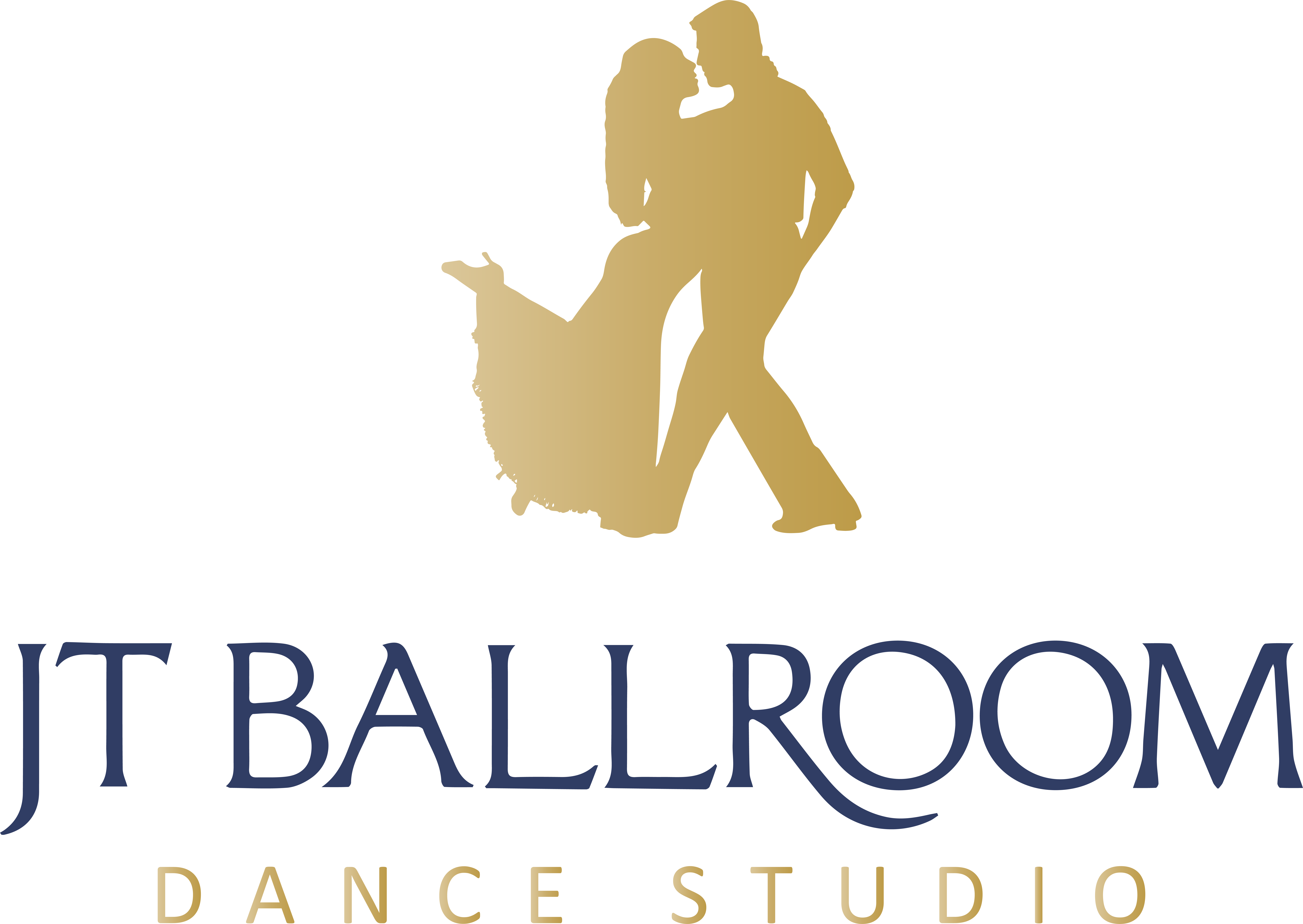
Ever watched dancers glide gracefully across the floor, moving perfectly with the music? Wondered how they made it look so elegant and easy. That’s the beauty of ballroom dance. From the smooth waltz to the lively tango, the dance style captures hearts with rhythm and charm.
If you’ve ever wanted to learn these classic dances, you’re in the right place. In this guide, you’ll learn ballroom dance basics that will help you become a pro dancer. Moreover, we’ll explore its different styles and share tips to help you feel at ease on the dance floor.
Are you excited to experience the grace and music of ballroom dance? Continue to read this guide!
Ballroom Dance for Beginners
If you’re a beginner, start to learn ballroom dance with your posture. Stand tall but relaxed, shoulders down, and chin up. Depending on the style, keep your arms gentle at your sides or in a dance frame. For footwork, focus on the basics. Also, practice stepping forward, backward, and to the sides, staying light on your feet.
Moreover, understanding dance floor etiquette is crucial. Respect the space of other dancers and synchronize your movements with the music’s rhythm. Patience is key as you navigate learning new steps and techniques.
Learn ballroom dance process and enjoy yourself — it’s about having fun while improving. With regular practice, you’ll build confidence and move smoothly across the dance floor, whether you’re waltzing, foxtrotting, or salsa dancing. Keep an open mind to learning new styles and techniques, and soon, you’ll find yourself gliding through dances with ease and joy.
Ballroom Dance Positions
In ballroom dancing, different holds and positions are crucial in how partners interact and move together on the dance floor. Understanding these positions helps dancers learn ballroom dance steps with grace and precision.
Closed Hold
In closed hold, partners face each other closely, bodies in contact, and typically hold each other with both hands. This traditional stance, seen in dances like the waltz and foxtrot, allows for a strong connection between partners, facilitating smooth movements and precise timing.
Open Hold
Open hold involves partners standing apart while maintaining a connection, usually with one hand. This position, common in dances such as salsa and swing, offers more freedom of movement. It allows dancers to perform intricate footwork and turns while maintaining visual contact and communication through the connected hand.
Promenade Position
In the promenade position, partners stand side by side, facing the same direction but angled toward each other. This elegant position, found in tango and certain waltz variations, creates a dynamic line and allows for expressive movements across the dance floor.
Shadow Position
Shadow position resembles closed hold but with partners slightly offset from each other. One partner stands behind and to the side of the other, often seen in dances like cha-cha and rumba. This position enhances the visual appeal of synchronized movements and intricate patterns.
Sway Position
Sway position involves partners leaning away from each other while maintaining hold. This adds dramatic flair, especially in dances like the waltz and foxtrot, emphasizing grace and fluidity in movement.
Handshake Hold
Handshake hold is a more relaxed connection where partners hold hands casually. It’s used in dances like merengue and some swing variations, allowing for a lighter, informal style while still maintaining connection and rhythm.
Ballroom Dance Steps
Knowing how to ballroom dance starts with understanding the basic steps that support various dances. For beginners, these foundational moves provide a starting point for mastering more complex routines.
- One key step is the “Waltz Box,” a sequence of smooth, flowing movements that form the core of the waltz.
- Another fundamental is the “Foxtrot Walk,” characterized by elegant gliding steps that define the foxtrot’s graceful style. These steps emphasize rhythm, posture, and coordination, which are essential for all ballroom dances.
Understanding these basic steps sets a solid foundation for progressing to different dance styles, such as the tango, rumba, or cha-cha, each with unique steps and rhythms. Moreover, practicing these foundational movements builds confidence and prepares dancers to learn ballroom dance beauty and diversity.
Explore the Ballroom Dance Floor Steps
Ballroom dancing offers a graceful way to move and connect with a partner. Whether you’re new to dance or want to refine your skills, learning the basics is key. Let’s discuss the fundamental steps of popular ballroom dances like the Waltz, Foxtrot, Tango, and Quickstep.
Waltz
Begin with the elegant Waltz. Start in a closed position with your partner. Move forward with your left foot, then bring your right foot to meet it. Move back with your right foot, then bring your left foot back. Repeat, keeping smooth and flowing movements.
Foxtrot
Next, try the smooth Foxtrot. Begin in a closed position. Move forward with your left foot, then slide your right foot to meet it. Step to the side with your left foot, then bring your right foot close to it. Repeat, maintaining a gentle rise and fall.
Tango
Explore the passionate Tango. Begin in a closed position with a strong frame. Step forward with your left foot, then cross your right foot in front of your left. Step to the side with your left foot, then close your right foot to your left. Keep sharp staccato movements and intense eye contact.
Quickstep
Lastly, enjoy the lively Quickstep. Begin in a closed position, ready for quick movements. Move forward with your left foot, then with your right foot. Step side with your left foot, then close your right foot to your left. Maintain a brisk pace and light, springy steps.
Types of Ballroom Dances
Ballroom dances are divided into two main categories: Standard dances and Latin dances:
- Standard dances, like the Waltz and Foxtrot, emphasize smooth movements and graceful rotations around the dance floor. These dances often showcase elegance and precise footwork.
- Latin dances like the Samba and Cha Cha Cha are lively and rhythmic, with energetic steps and hip movements. They originate from Latin American culture and focus on passion and expression.
Both categories require partners to move harmoniously, following specific rhythms and patterns.
How We Learned the Right Steps to Different Dances?
Learning how to ballroom dance involves several key steps to ensure proficiency and enjoyment. Beginners can start by finding reputable dance classes like our JT Dance Studio that cater to their skill level. Our instructors will help you learn advanced and basic ballroom dance steps and positions in a structured manner. Here are some ways to learn different dance steps faster so you can practice each move and remember them well:
1. Chunking
Your brain remembers information better when it’s in chunks. For dance, this means breaking choreography into smaller sections. Focus on key movements that act as markers between each section. This approach helps you learn and remember the dance more effectively than learning long sequences at once.
2. Move On Quickly After Mistakes
Don’t be sad about mistakes during practice. Keep up with the class pace and focus on the overall routine. If a specific move trips you up, you can revisit it later. This way, you won’t fall behind and can make the most of your rehearsal time.
3. Watch Your Instructor
When learning choreography, watching your instructor closely is more effective than trying to dance along immediately. You’ll notice details that aren’t clearly taught, helping you better grasp the movements, timing, and character of the dance.
4. Take Multiple Classes in a Day
Consider taking multiple dance classes in a day to sharpen your mind and pick up choreography faster. While this can be challenging, it trains your brain and body to adapt quickly to new routines. Repetition is also crucial for long-term learning of choreography.
5. Mental and Physical Practice
Practice silently rehearsing the dance in your mind alongside physically performing it. This mental imagery and syncing with the music helps reinforce the sequence in your memory and muscles.
Ballroom Dance Etiquette for Beginners
Ballroom dancing is a graceful and social activity that requires some basic etiquette for beginners to feel comfortable and respected on the dance floor. When choosing attire, opt for formal wear like a dress or a suit, ensuring comfort and ease of movement. Approach someone for a dance politely and confidently, asking if they would like to dance with you. Respect their response, whether it’s a yes or a no.
During dances, maintain proper posture and be mindful of your partner’s lead or follow cues. Stay aware of the space around you to avoid collisions with other dancers.
If unsure about steps or moves, don’t hesitate to ask for guidance or take beginner classes at JT Dance Studio to build confidence.
Final Words: Beyond the Basics
This ballroom dance guide opens the door to deeper exploration and mastery. Once you learn ballroom dance basics, like dance positions and steps, you can advance to more complex choreography. For those interested in competitive dancing, refining technique, and precision becomes crucial.
Moreover, advanced steps in ballroom dancing involve complex footwork and synchronized movements with a partner. By learning this advanced choreography, you will achieve fluidity and will be able to enhance the dance’s storytelling.
Never forget if you’re in competitive settings, refine your skills to achieve higher scores based on technique, timing, and artistic interpretation.










